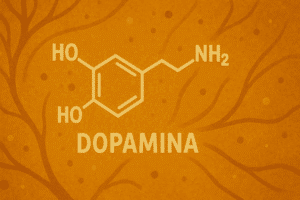The olfactory system is responsible for detecting odors and converting them into signals that our brain interprets as smells. Although the sense of smell is one of the oldest senses, the ability to detect odor molecules has evolved very slowly over millions of years.
The discovery of the olfactory receptors was made almost 20 years ago, in 1991. However, since then, little progress has been made regarding the identification of these genes.
Olfactory receptors (ORs) are named according to their location in the nose. They are distributed throughout the nasal cavity, mainly in the olfactory cells. Each neuron expresses only one type of receptor and therefore the entire population of neurons responds to a particular odorant.

In mammals, these receptors are expressed exclusively in the olfactory epithelium, where they bind specific odorants and trigger the release of neurotransmitters such as acetylcholine and dopamine, which mediate the perception of smell.
In addition to being involved in the detection of odorants,ORs play a role in regulating the activity of sensory neurons.
What are olfactory receptors?
The Olfactory Receptors (ORs) are a family of G-protein coupled receptors that detect odorants, and initiate the signal transduction cascade in the brain. The ORs are expressed on the cilia of olfactory sensory neurons located in the nasal cavity and are membrane-bound proteins located on the surface of olfactory sensory neurons (OSNs). OSNs are specialized neurons found in the olfactory mucosa, which line the upper respiratory tract.
Each receptor is encoded by one gene, which produces a protein composed of 7 transmembrane domains.
Receptors are divided into two groups based on sequence homology:
- Class I:have seven transmembrane domains and are responsible for detecting the volatile odors.
- Class II:receptors: contain eight or more transmembrane domains. It is thought that these receptors are involved in the detection of non-volatile odorants.
Where are the olfactory receptors located?
Each human contains approximately 100 million olfactory sensory neurons, which are located in two distinct regions: the main olfactory epithelia and the vomeronasal organ. The main olfactory epithelial region consists of three layers: the basal layer, the sustentacular layer, and the apical layer.
The basal layer contains stem cells that give rise to new OSNs during adulthood.
How many olfactory receptor genes do a human have?
It is estimated that there are between 1,000 and 2,500 genes ORs in humans that makes us able to distinguish up to 1 billion different odors. These genes encode proteins that act as molecular switches that transmit chemical messages across cell membranes.
Example of olfactory receptors and functions
The genetic diversity resides in our DNA, that is, in the information found in our genome sequence.
When we talk about olfactory receptors, there are numerous genomic variants that influence this diversity. Let's look at some specific examples:
- Olfactory receptor gene 51 B5 (OR51B5)Among the existing genomic variants in this gene we find one associated with cinnamon smell sensitivity.
- OR10A2 (Olfactory receptor gene 10 A2)In this gene there is a genetic variant reported in scientific studies as responsible for the aversion that certain people feel for cilantro.
- Gen OR6C70 (olfactory receptor gene 6 C70)Among the different genomic regions of this gene is a missense variant associated with the intensity with which we perceive licorice smell.
If you are interested in learning more about these variants, you can do so with the genetic test of ADNTRO.
How does olfaction work?
This causes the axons of the OSNs to send signals to the olfactory bulb via the cribriform plate, where the information is processed. The olfactory bulb is a neural structure of the vertebrate forebrain involved in olfaction, the sense of smell.

This causes the axons of the OSNs to send out signals to the olfactory bulb through the cribriform plate, where the information is processed. The olfactory bulb is a neural structure of the vertebrate forebrain involved in olfaction, the sense of smell.
What can damage olfactory receptors?
Damage to olfactory receptors can occur due to various factors. Some examples include exposure to environmental toxins, genetic mutations, and aging.
Environmental toxins that can damage olfactory receptor function include heavy metals like mercury, lead, arsenic, and cadmium; organic solvents like benzene, trichloroethylene, and xylene; pesticides like DDT, dieldrin, and endosulfan; herbicides like atrazine and glyphosate; industrial chemicals like formaldehyde, ethylbenzene, styrene, and toluene; and air pollutants like ozone and nitrogen dioxide.
Genetic mutations that can cause damage to olfactory receptors include those associated with cystic fibrosis, congenital insensitivity to pain with anhidrosis, and Kallmann syndrome.
Aging is also known to affect olfactory receptor function. In fact, there is evidence that suggests that the number of olfactory receptors decreases with age.
Do you want to know the secrets hidden in your DNA? 👀 Don't wait any longer, use the code. BLOG10 on your purchase and enjoy a discount of 10%. Embark on the journey to self-knowledge with ADNTRO!














